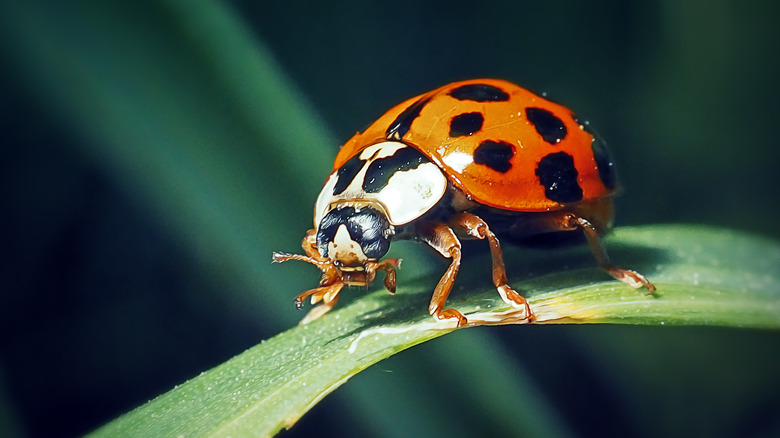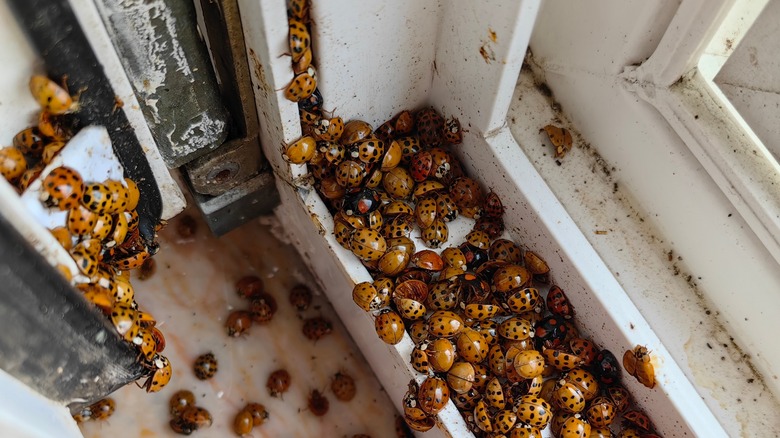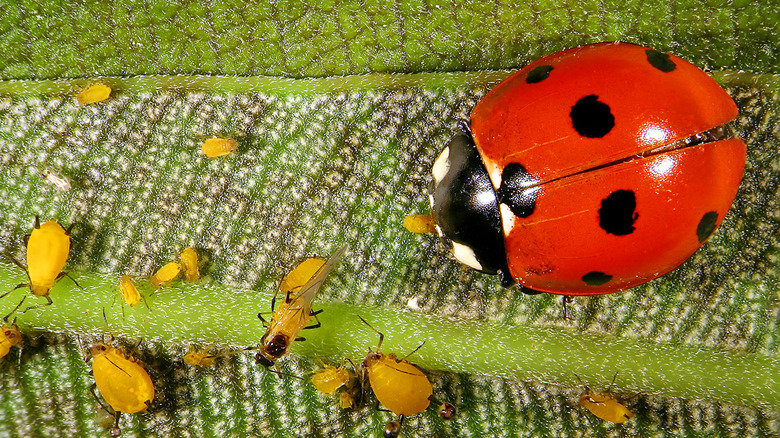How To Tell Ladybugs Apart From Their Nasty Twin Asian Lady Beetles
The term ladybug is somewhat misleading because they are not actually bugs in the true sense of the word. Indeed, ladybirds, which is what ladybugs are called in the UK are also not birds. All ladybugs and ladybirds are, in fact, beetles, so they should all probably be called lady beetles. There is, however, a difference between what we know as the harmless native ladybug and their nasty twin the Asian lady beetle, and there are a few ways for you to tell the difference between the two – Asian lady beetles are less round in shape than ladybugs and their white markings are bigger.
Both species do have very similar features, but there are slight differences in appearance that you can look out for to tell them apart. For example, they both come in a variety of different color configurations, ranging from yellow, orange, pink, red, grey, and black, or punctuated with varying numbers of contrasting spots. They also have white markings on their heads that can look like cheeks. Moreover, if you look closely at the area where the head meets to wings, you may see a black 'M' shaped marking — this is when you know that you are in the presence of the invasive Asian lady beetle species.
Why don't we like Asian lady beetles?
The Asian lady beetle is an invasive species that isn't native to the US or UK. The US Department of Agriculture introduced them to help control crop pests like aphids. Now they are known as household pests because they tend to sneak into our homes in large numbers during late fall to escape cold winters, which our native ladybirds and ladybugs don't do.
The thing about this is that if you disturb an Asian lady beetle, or if they feel threatened, or if you decide to squash one, they will release a yellow-colored secretion with a very offensive odor. This is actually their blood, and this reflex bleeding occurs in order to repel other creatures that might be interested in eating the beetle. It won't necessarily harm you, but it's gross and it can cause permanent stains on your clothes or soft furnishings.
Asian lady beetles aren't dangerous to humans or pets, but they do bite. The bite isn't venomous, and you may not even feel it as much more than a pinprick, but it may alarm small children who read cute tales about ladybugs in storybooks. Some people may have an allergic reaction if bitten, which could lead to a variety of symptoms such as welts and swelling, itchy nose and eyes, and may exacerbate asthma.
Why native ladybugs are beneficial to your garden.
The native ladybug is our helpful little friend and is often considered to bring good luck. Most commonly we recognize them by their shiny red backs with distinctive black spots. Farmers are big fans and gardeners love them because they are a natural way to help control pests when we grow flowers and food in our backyards.
Ladybugs help to keep pest populations under control so that they don't affect our crops by feeding on their eggs and the insects themselves. One of their favorite foods is aphids, which gardeners hate due to the damage they can cause, stunting plant growth, and spreading viruses. Ladybugs also eat a wide range of other pests, including the notorious mealy bug, and they can attack and subdue other insects and mites. Even as larvae, ladybugs are useful, feeding on aphids and other soft-bodies creatures on your plants — and they have bottomless appetites! Some plant enthusiasts even go as far as to release ladybugs into their homes to take care of pest infestations on indoor houseplants as an alternative to using harmful and expensive chemical pesticides.


